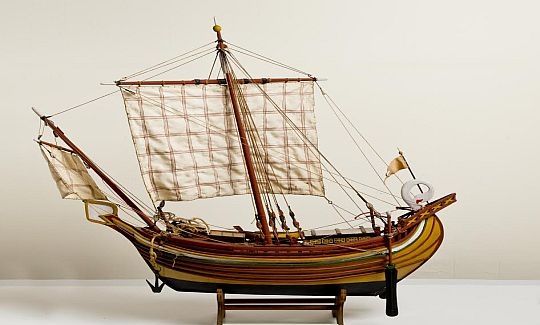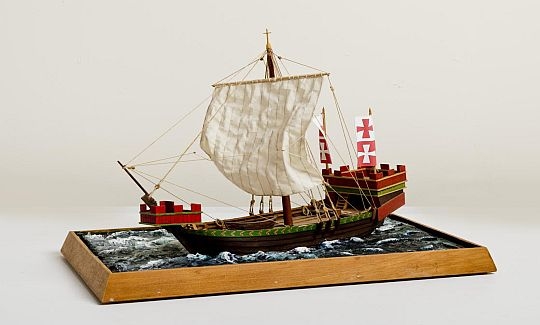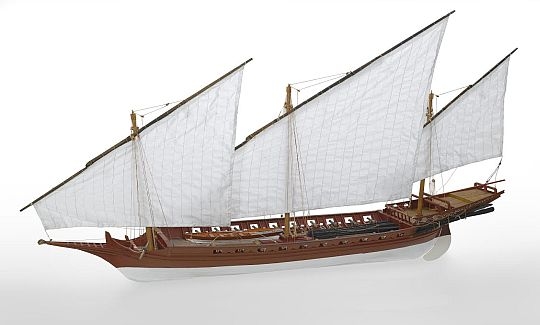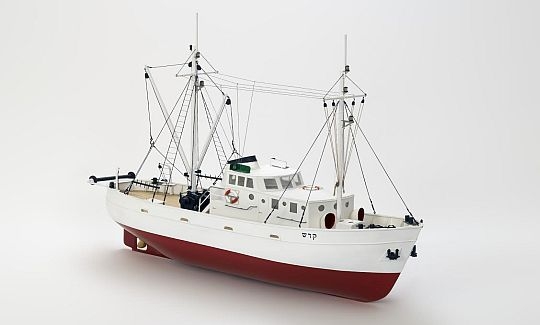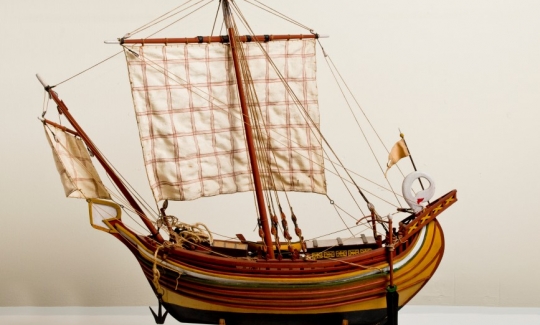SHIPS – THE MODELS TELL THEIR STORY
Saturday, 01.08.15
Saturday, 12.12.15
:
Avshalom Zemer
More info:
04-6030800Building model ships is a skill that began in times long past and continues to thrive among those who love ships and the sea. Constructing a model that is complete in all its details requires much patience, as well as practice, technical ability, and some familiarity with maritime history.
A painting or sketch of a vessel, however accurate, is two-dimensional, flat. It does not reveal what lies beneath the surface or show the details clearly. A three-dimensional model can be studied from different angles, so that one can see all those points that are not visible in a painting. Ship models breathe life into the wonderful tales of voyages, adventures, naval engagements. One cannot really comprehend the great voyages of discovery, such as Columbus’ discovery of America or the famous sea battles, without knowing something of the ships that participated in them – how they looked, what weapons they carried, and so on.
Throughout history, the incentives to build models have varied, reflecting styles and cultural trends. Ship models have been made for centuries by mariners praying for a safe passage for their vessel. According to findings from the middle of the fourth millennium BCE, and until the 16th century CE, these models were affiliated to religious belief, and as of the mid-14th century, especially in coastal areas, it is still customary to hang model ships or boats in local churches or chapels as votive offerings (ex votos). Sailors also constructed models in their off-duty periods during long voyages, to relieve the monotony.
Models are also made for practical purposes – as a means of actualizing the design of a vessel, part of the construction process. For a long time, ship designers made models in order to develop their ideas, to see whether they were viable. Many models of this type have been preserved in collections, both public and private.
Some models are created specifically for prestige in the business world. Many are exact replicas of vessels that have already been launched, and are intended for display in the offices of shipping magnates and shipyards. Today, companies building the fleets of the world usually present their clients with three technically accurate models of each type of vessel that has been commissioned.
Models made by amateurs are not always perfect – some are accurate, others concentrate on specific details. A sailor who is well-versed in the intricacies of rigging might create an exact replica of a ship’s tackle, and some model-makers specialize in ships in bottles.
Many models of vessels from earlier times that were constructed at the end of the 19th century were based on only partial information. Today, construction is based on data and research, and is much more accurate. The current literature includes reconstructions and plans to scale. Kits are also available nowadays, containing all the necessary parts, plans, and instructions ranging from simple to very complicated. Model makers sometimes integrate prefabricated parts in their own work.
In the middle of the 20th century, interest in model ships increased, especially in regard to sailing ships, largely due to the romance of sail. The beauty of the sailing ships and their multitude of details challenge the model-maker. Some model-makers construct vessels they find particularly interesting due to their typology or period.
In the Far East and other places, such as the island of Mauritius, a mass production conveyor-belt system In the middle of the 20th century, interest in model ships increased, especially in regard to sailing ships, largely due to the romance of sail. The beauty of the sailing ships and their multitude of details challenge the model-maker. Some model-makers construct vessels they find particularly interesting due to their typology or period.
In the Far East and other places, such as the island of Mauritius, a mass production conveyor-belt system for building such models has been developed, especially of sailboats, which are then sold at virtually dumping prices – so that many people can now acquire model boats for ornamental purposes.
There has been a surge of interest in model building in recent decades, and many clubs have been established, all of them eager to present exhibitions of their models, and competitions are held. Developments in communications, especially the internet, enable exchange of information worldwide, by means of articles, plans, photographs, etc. Immigration from the former U.S.S.R. has increased the number of model-makers in Israel, both amateurs and experts.
This exhibition presents a broad spectrum of ship models. Sailing ships were used for combat and trade until the second half of the 19th century - the end of the age of sail and the beginnings of the era of steam and diesel. Models of 20th century vessels are also presented here, thus combining a historical record with progressive technological developments.

